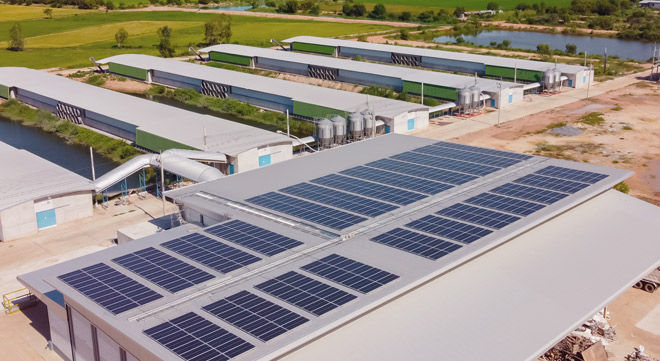Section 12B of the Income Tax Act (ITA) offers favourable tax incentives to businesses that invest in renewable energy.
The section provides for an accelerated write-off of qualifying assets used in the production of renewable energy. The assets must be used by a taxpayer for the purpose of trade. The deduction is spread over three years: 50% of the cost in the first year, 30% in the second, and 20% in the third. An exception is made for photovoltaic (PV) solar energy not exceeding 1MW, which is fully deductible in the first year of expenditure.
The enhanced renewable energy tax incentive was inserted as section 12BA last year. It provides for a temporary separate allowance of 125% of the costs for new and unused assets brought into use for the first time on or after 1 March 2023 but before 1 March 2025.
A taxpayer can claim only under section 12B or section 12BA, not both.
Jerome Brink, a director in Cliffe Dekker Hofmeyer’s tax and exchange control practice, says section 12B appears relatively simple and straightforward compared to other tax provisions. However, he says, for the uninitiated, it could result in unwanted consequences and, in a worst-case scenario, the non-application of the allowance.
“It is no wonder that many taxpayers are approaching the South African Revenue Service for rulings on the interpretation of the provision.”
Brink provided a commentary on the most recent ruling issued by SARS on the application of section 12B: Binding Class Ruling 88 (BCR 88), which was issued on 22 February 2024.
He points out that rulings issued by SARS are not binding on all taxpayers but only in respect of SARS’s dealings with the specific applicant taxpayer. Nevertheless, a ruling is valuable to taxpayers because it provides important insights into SARS’s potential interpretation of certain issues.
What qualifies as ‘generation assets’?
One of the key issues faced by taxpayers is what types of assets factually fall within the allowance. Brink says BCR 88 provides some insight into this because it refers to a detailed list of “generation assets” that qualify for the allowance.
Apart from the expected assets, such as the solar PV panels themselves, the definition of “generation assets” also includes battery inverters, battery back-up systems, and battery units (and their component parts).
This reinforces the principle, also dealt with in BCR 85, that if batteries are sufficiently integrated into a renewable energy system and form part of the system’s energy continuum, they will also qualify for the allowance, Brink says.
It recognises that stored energy derived from renewable sources falls within the parameters of the allowance. This is important because the sun does not shine at night when energy needs may be at their highest in certain instances.
“Another interesting aspect is that overhead power infrastructure and towers, including accessories and foundations, are also included in the ambit of ‘generation assets’,” Brink says.
“It is not clear from the ruling what exactly these assets are, why they are needed, and how they are integrated into the solar system. However, it certainly builds on the extent of critical assets required to operate a solar system that will qualify for the allowance.”
Solar tax incentives used by partnerships
BCR 88 also deals with the deductibility of expenditure to be incurred, and the limitation of any allowance and deductions claimed by en commandite partners (that is, limited partners) investing in solar PV energy assets.
Brink says the taxation of partnerships in South Africa can lead one into murky waters. However, section 24H of the ITA provides some guidance. It codifies certain aspects of the taxation of partnerships, although it leaves certain factors open to interpretation.
In this context, he says, it is noteworthy that SARS ruled, among other things, as follows in BCR 88:
- Under section 24H(2), each class member (limited partner) is deemed to carry on the trade of the partnership. This is important because section 12B requires the taxpayer that is claiming the allowance to have carried on a trade.
- Each class member (limited partner) is entitled to deduct its proportionate share of the partnership’s deductions and allowances, including that allowed under section 12B. This confirms that each limited partner has co-ownership of the relevant underlying assets, which is a prerequisite for the application of the allowance.
Brink says it is also interesting to note that the ruling mentions that once the necessary capital commitments have been secured, the partnership will be closed. It will not be open-ended for further capital contributions by new investors, except where a new limited partner is substituted for an existing limited partner who subsequently withdraws. This is arguably an important differential.
“In this regard, it was importantly ruled that new limited partners may claim section 12B(1)(h) allowances in respect of their proportionate interests in the partnership assets acquired, provided that the new limited partner is acquiring and bringing such assets into use for the first time,” he says.
“Partnerships are an attractive business vehicle in South Africa, as they have various commercial benefits. However, the interaction between section 12B and the taxation of partnerships can be complex. BCR 88 assists taxpayers by providing some guidance on the interpretation of these somewhat intricate provisions.”
Disclaimer: The information in this article does not constitute legal or tax advice that is appropriate to every individual’s needs and circumstances.



